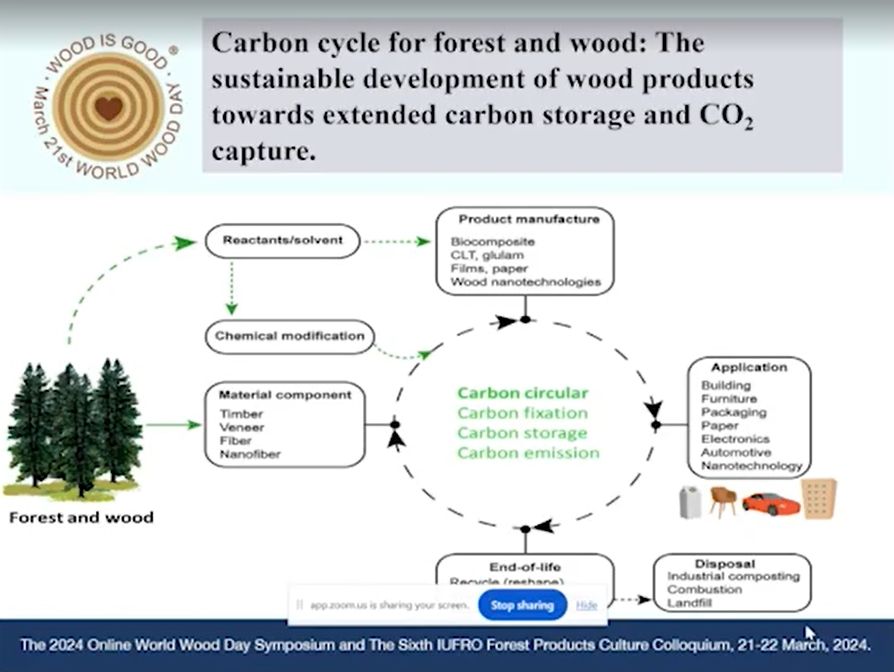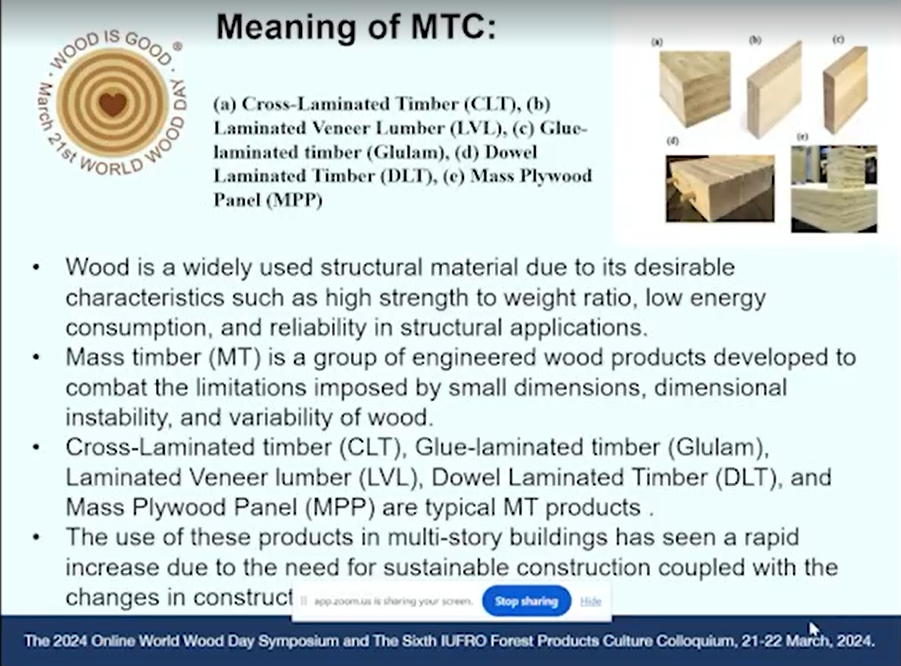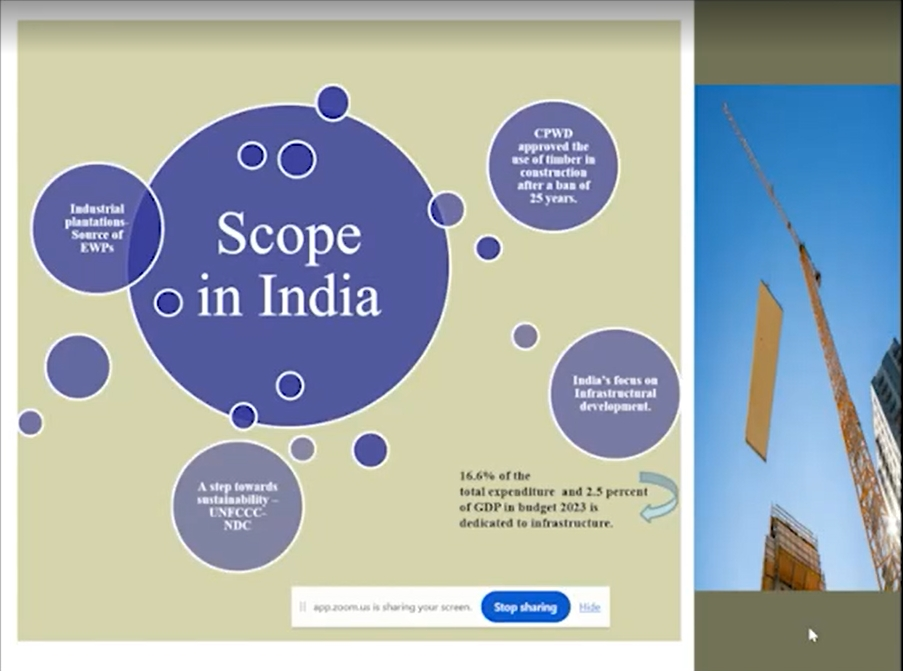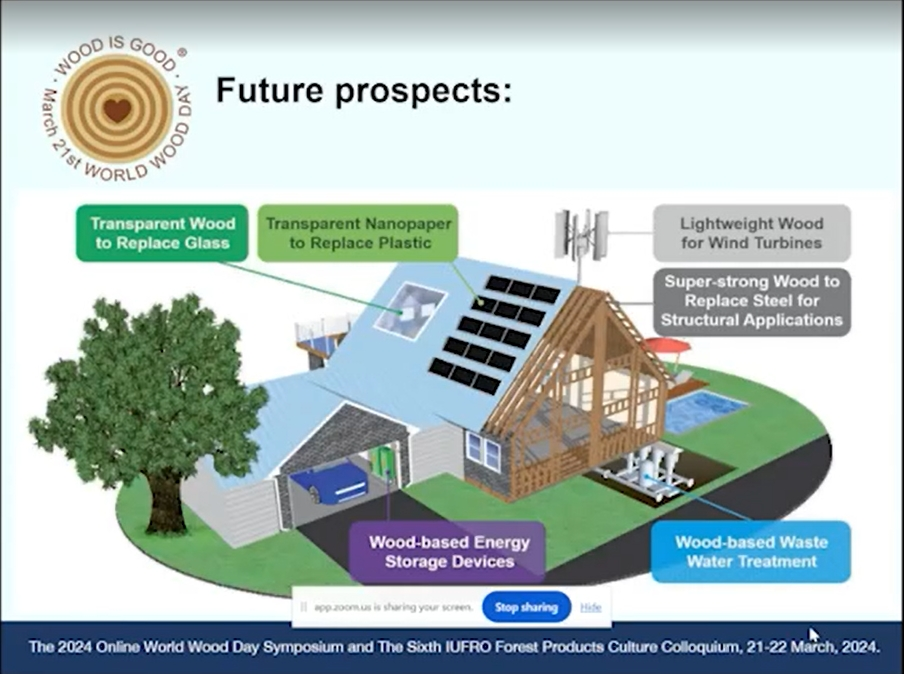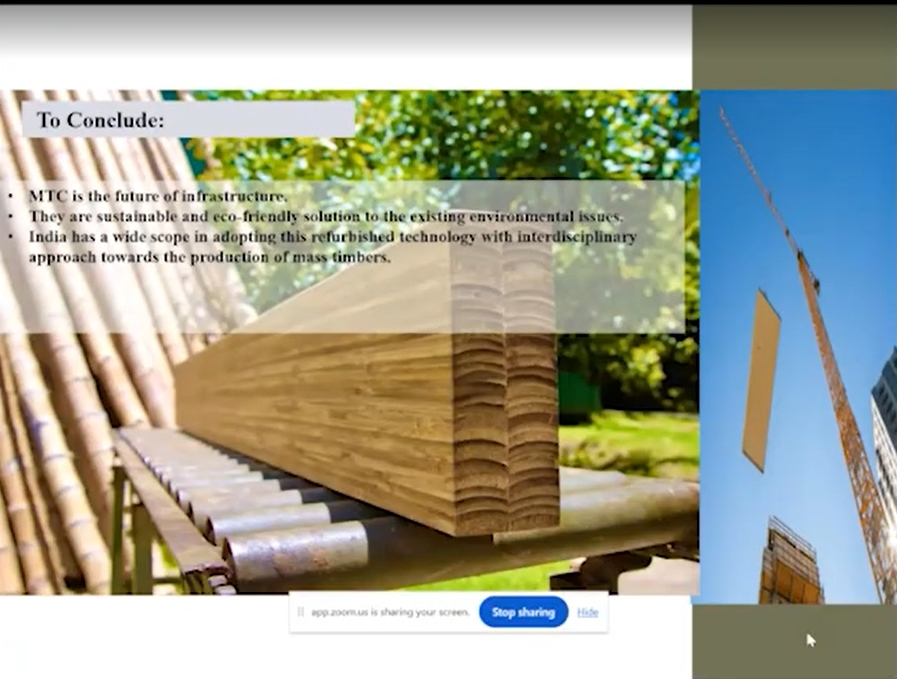会议名称:“2024世界木材日”研讨会暨第六届国际林联(IUFRO)林产品文化研究组讨论会
会议时间:2024年3月21-22日
报告嘉宾: Laqshika Patiyal
嘉宾单位:Dr. Y.S Parmar University of Horticulture and Forestry,印度
报告摘要:
The building and construction sector is a major contributor to human environmental impact on the planet. Worldwide the construction industry is a major source of anthropogenic pollutants through the use of primary energy, emissions of greenhouse gases (GHGs), extraction of non-renewable raw materials, and generation of construction and demolition (C&D) waste. Of the global carbon emissions, the building operation and the manufacturing of construction materials sectors account for 28% and 11%, respectively along with 40% of total carbon emissions. Mass timber products, are one of the sustainable alternatives to traditional building materials and have led to the recent revolution in timber construction. Mass timber (MT) is a group of engineered wood products developed to combat the limitations imposed by small dimensions, dimensional instability, and variability of wood. Cross Laminated Timber (CLT), Glue laminated timber (Glulam), Laminated Veneer Lumber (LVL), Dowel Laminated Timber (DLT), and Mass Plywood Panel (MPP) are typical MT products. Utilizing MT products as alternatives to conventional non-renewable building materials can help alleviate the increasing global environmental issues such as global warming and energy depletion. To illustrate, the energy consumption of timber-based building is about 15% less compared to conventional buildings. This is because of the reduced energy required for wood production compared to the manufacturing of conventional building materials (concrete and steel) that are obtained through the non- renewable sources. India with its growing population, infrastructural need and sustainability, has a huge potential to successfully adopt MTC.
责任编辑:iwcs25H


 1,372
1,372
